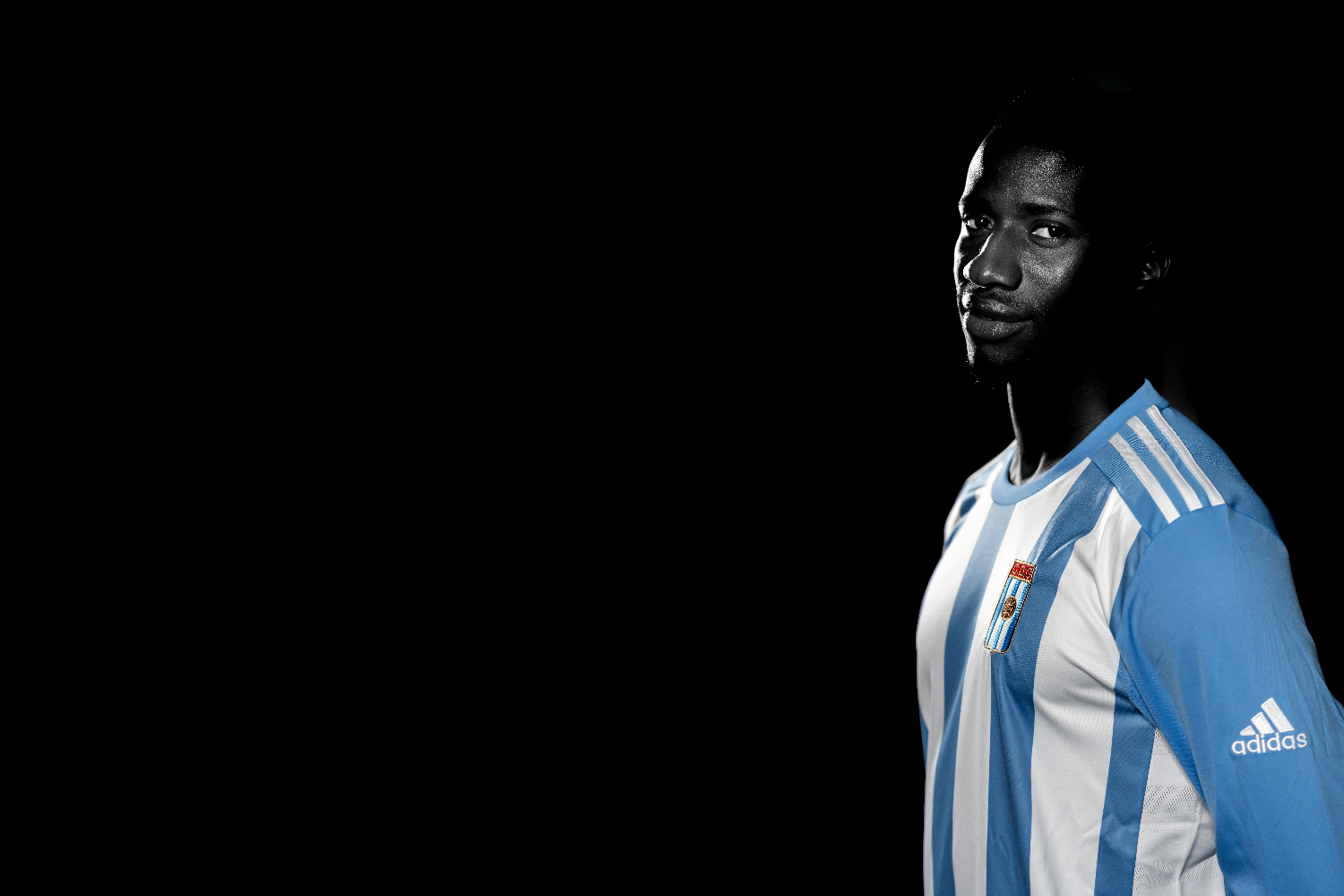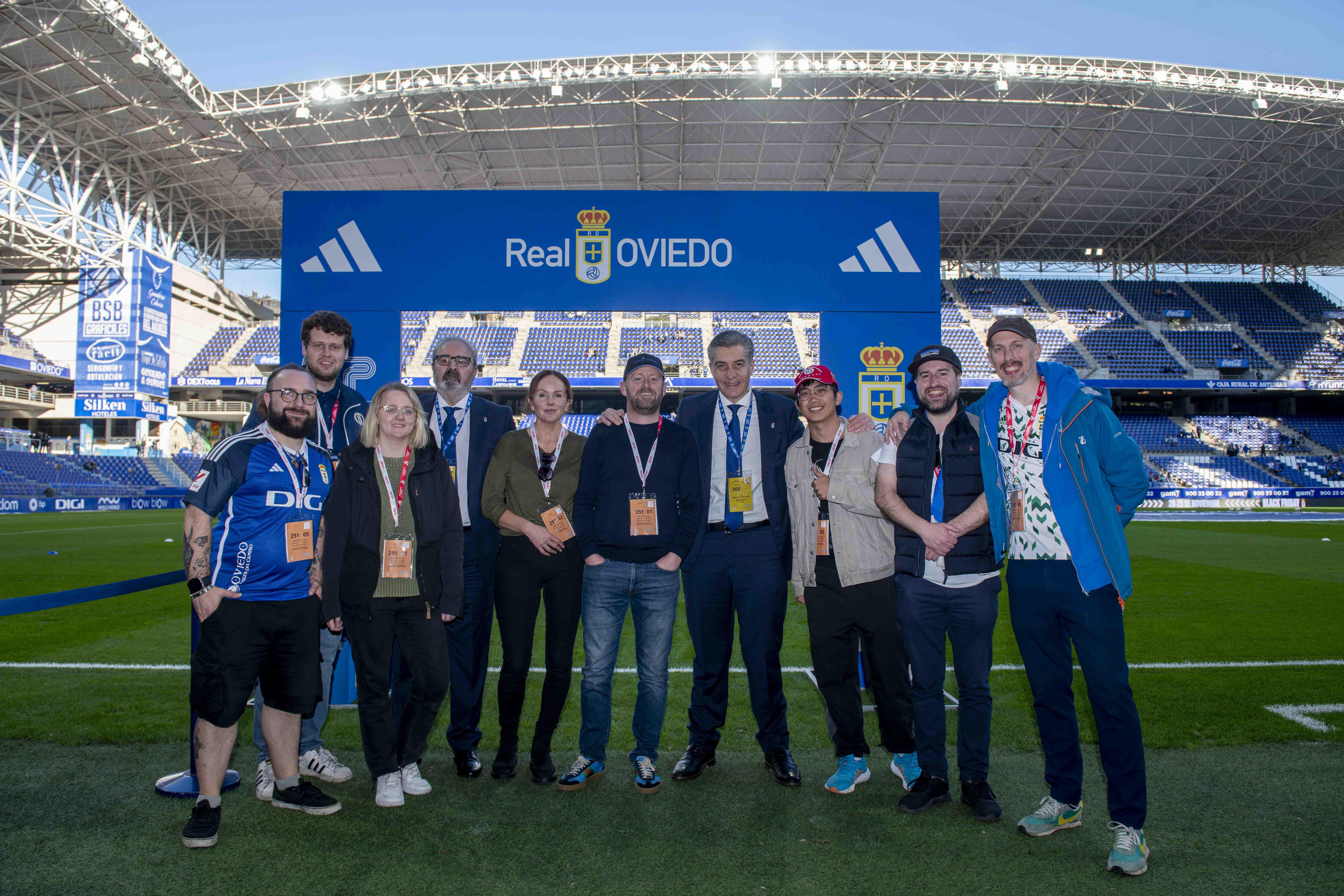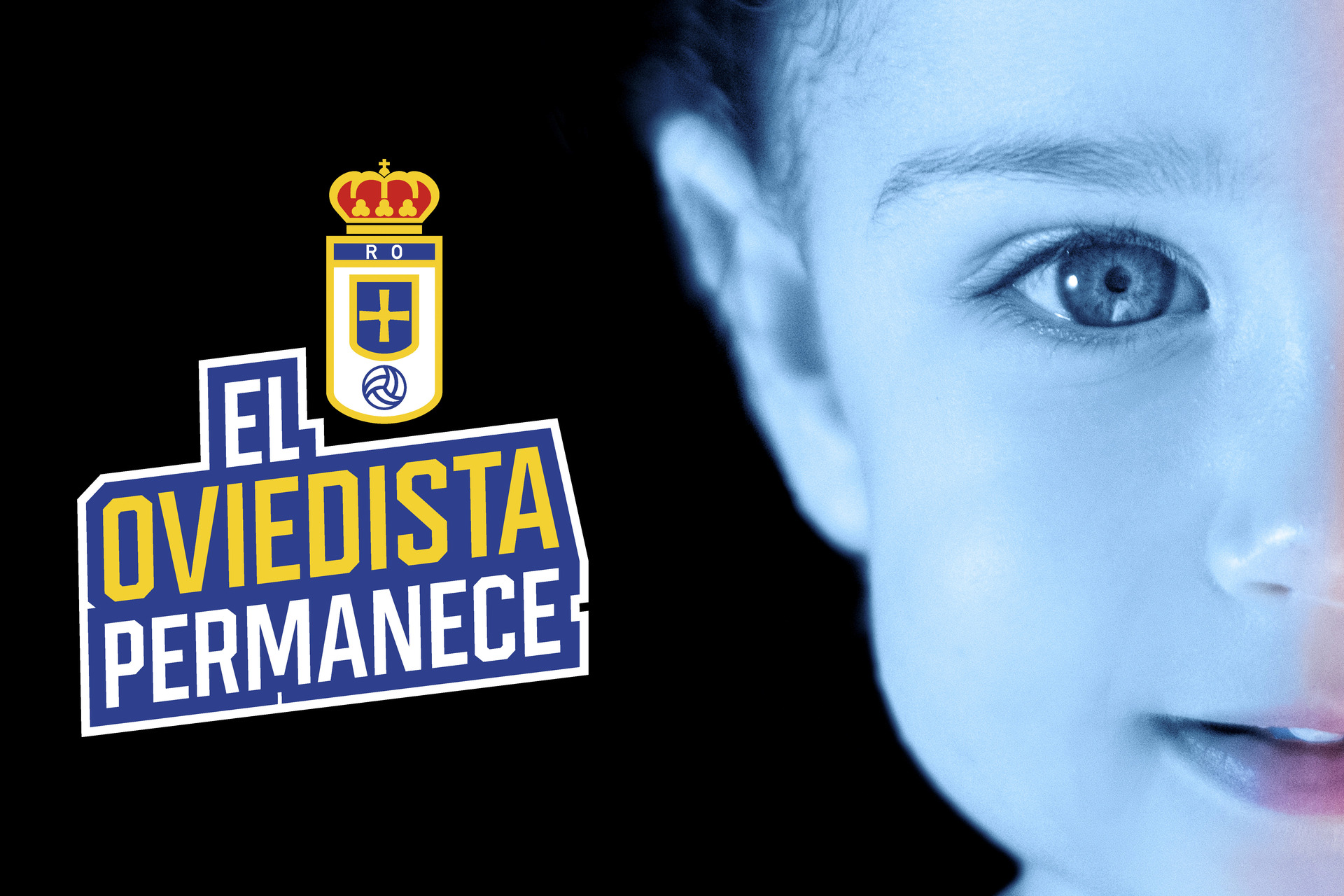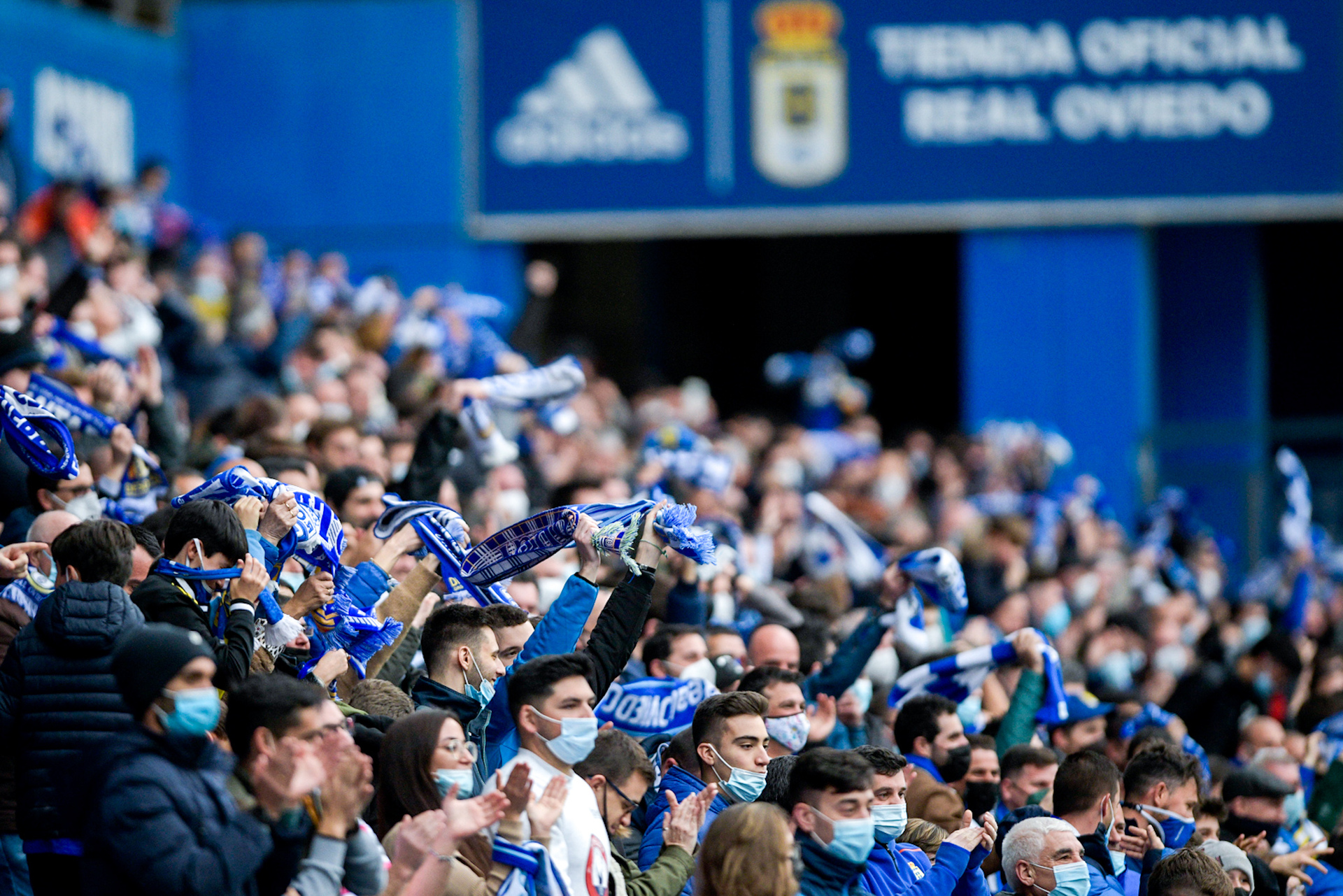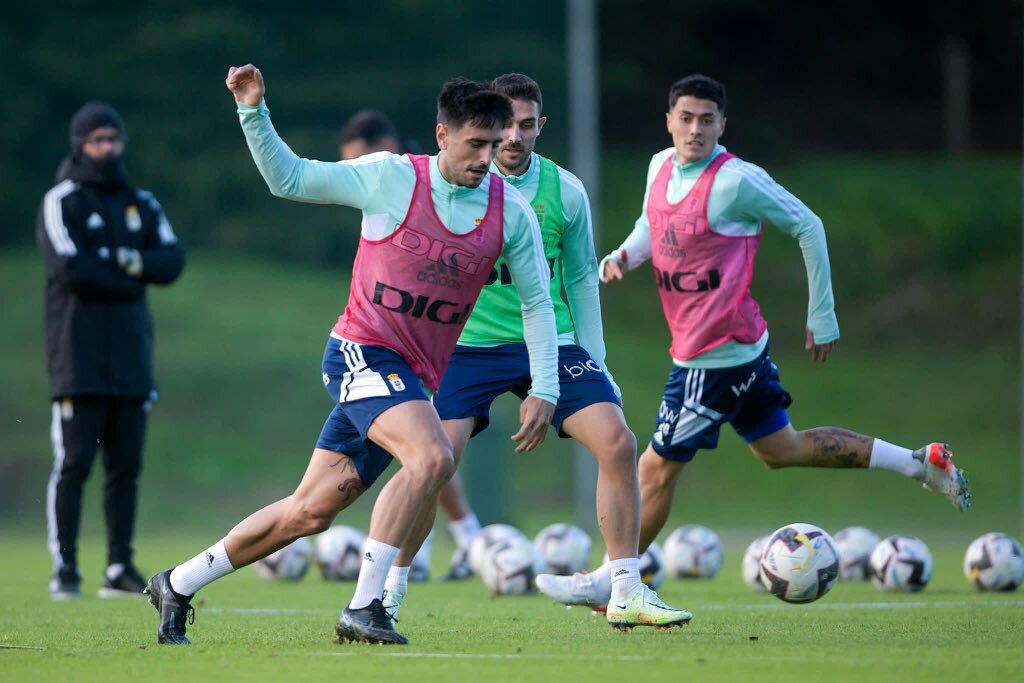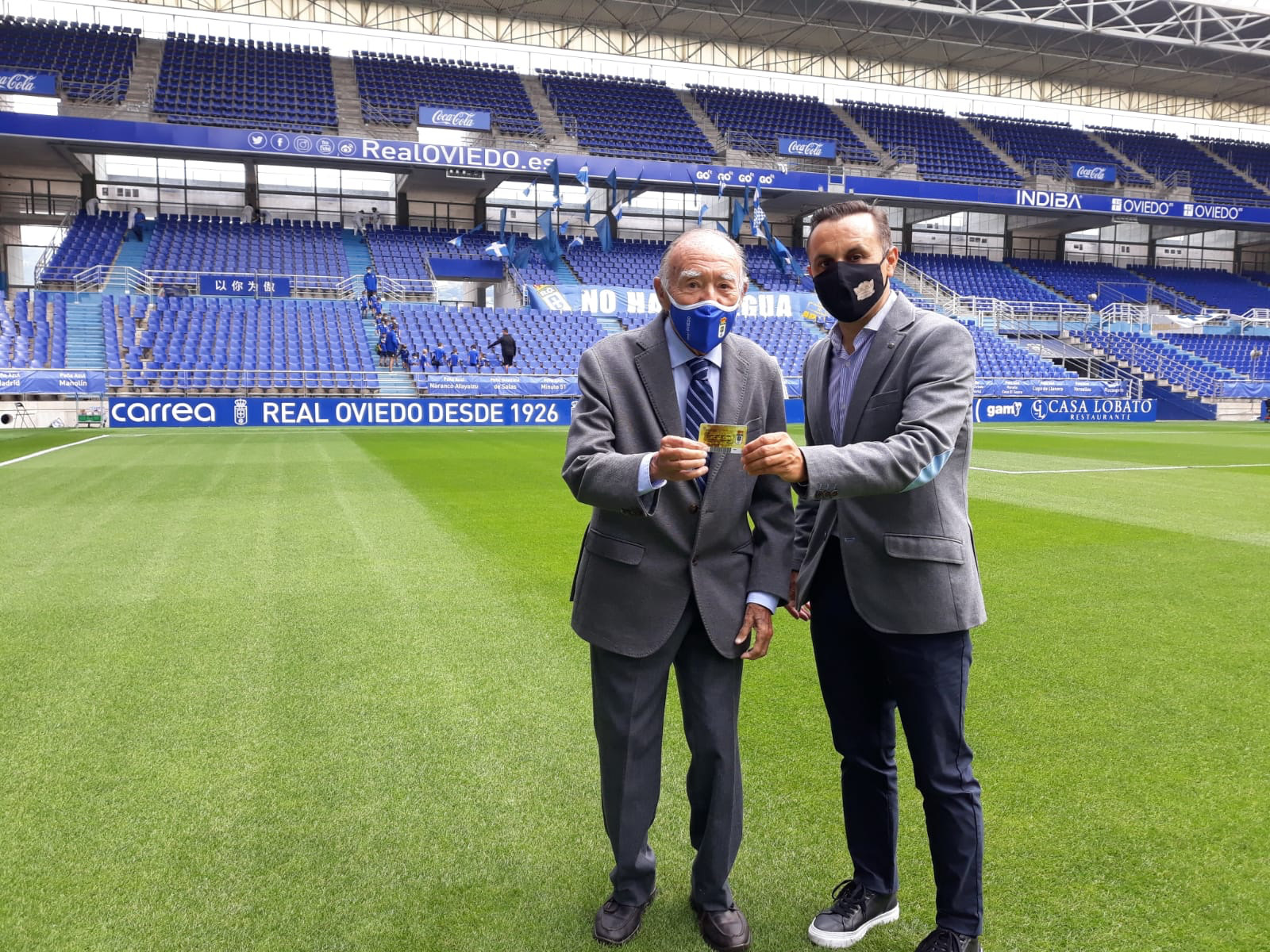One century ago, a good part of the football fans in Oviedo passionately cheered on the ‘blanquiazul’ (blue and white) team of the city, Club Deportivo de Oviedo.
Deportivo was founded when the spring of 1919 just started to bloom. The countries involved in World War One had yet to sign the peace agreements, and the sport of football was just getting started in Oviedo.
The Constitutional Act of Deportivo stated that the colours of the new club would be white and blue, and would be reflected in the badge, which would consist of vertical stripes in the said colours.
The badge would also bear the club’s initials, C.D.O, in interlinked, red letters, as well as a black cat, as a symbol of agility and skill.
All of this, except for a few minor details, would be portrayed on the Deportivo badge, as we can see from the badges of the club that have lasted until today. It seems, however, that the agile and skillful cat decided to escape, as it does not appear in any graphic representation of the badge, nor are the initials linked together nor written in red, even though they appear on a red background. There are representations of the badge that have been conserved, with the club’s initials still on a blue backdrop.
The founding members of Deportivo also joined the dominant trend of football of the era, of striped shirts. Their great rival, Real Stadium Club Oventense, the team of the working class, wore dark blue and yellow stripes, and Deportivo would make a copy of their jersey, but with white and blue stripes, in lighter and more delicate shades.
Ultimately, Deportivo, whose members and fans were mostly of the wealthy class, emerged as a rival for Stadium; a staunch rivalry which existed from the moment the two clubs first coexisted. Both teams coincided in that they wanted to, and should, wear blue, the colour of the city, in both their badges and in their kits. There were rivals, but when all was said and done, they were brothers; both sons of the city of Oviedo and of the passion for the new sport that was becoming all the rage.
The city was able to call both teams together and convince them that it was better for football in Oviedo to rally behind one team instead of two, in order to compete with teams from other cities. And thus, in the spring of 1926, the two clubs merged; Real Stadium Club Oventense, with blue and yellow stripes, and Real Club Deportivo de Oviedo, with the white and blue stripes and the newly-acquired royal title, merged together to form Real Oviedo.
